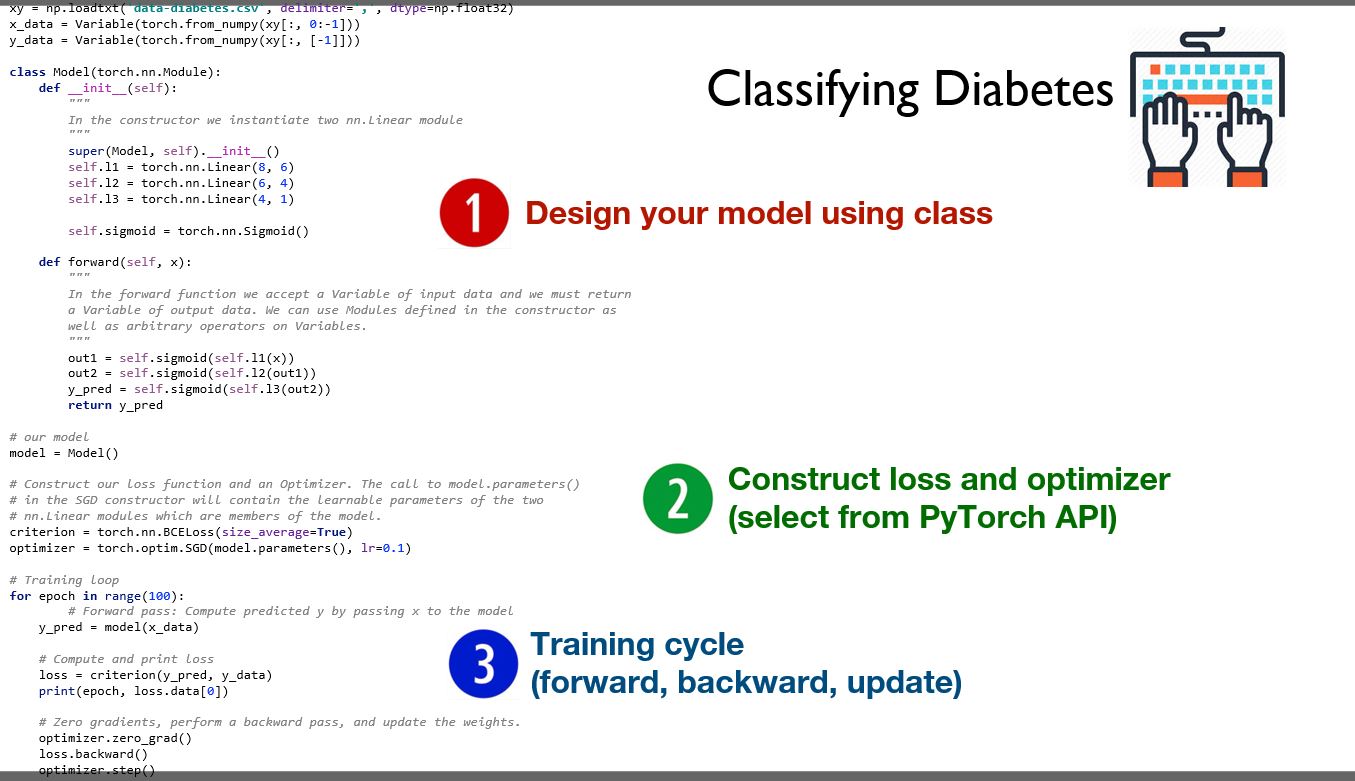PyTorch Lecture 07: Wide and Deep
阿新 • • 發佈:2019-02-20
 糾正了作者程式碼中個的一個問題,即看資料大小的程式碼
糾正了作者程式碼中個的一個問題,即看資料大小的程式碼import torch from torch.autograd import Variable import numpy as np xy = np.loadtxt('./data/diabetes.csv.gz', delimiter=',', dtype=np.float32) x_data = Variable(torch.from_numpy(xy[:, 0:-1])) y_data = Variable(torch.from_numpy(xy[:, [-1]])) print(xy[:, 0:-1].shape) # 看輸入資料的大小 print(xy[:, [-1]].shape) # 看輸入資料的大小 class Model(torch.nn.Module): def __init__(self): """ In the constructor we instantiate two nn.Linear module """ super(Model, self).__init__() self.l1 = torch.nn.Linear(8, 6) self.l2 = torch.nn.Linear(6, 4) self.l3 = torch.nn.Linear(4, 1) self.sigmoid = torch.nn.Sigmoid() def forward(self, x): out1 = self.sigmoid(self.l1(x)) out2 = self.sigmoid(self.l2(out1)) y_pred = self.sigmoid(self.l3(out2)) return y_pred # Our model model = Model() # Construct our loss function and an Optimizer. The call to model.parameters() # in the SGD constructor will contain the learnable parameters of the two # nn.Linear modules which are members of the model. criterion = torch.nn.BCELoss(size_average=True) optimizer = torch.optim.SGD(model.parameters(), lr=0.1) # Training loop for epoch in range(100): y_pred=model(x_data) # Compute and print loss loss=criterion(y_pred,y_data) print(epoch,loss.data[0]) # Zero gradients,perform a backward pass,and update the weights optimizer.zero_grad() loss.backward() optimizer.step()
